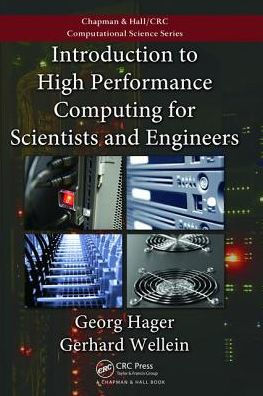The text first introduces the architecture of modern cache-based microprocessors and discusses their inherent performance limitations, before describing general optimization strategies for serial code on cache-based architectures. It next covers shared- and distributed-memory parallel computer architectures and the most relevant network topologies. After discussing parallel computing on a theoretical level, the authors show how to avoid or ameliorate typical performance problems connected with OpenMP. They then present cache-coherent non-uniform memory access (ccNUMA) optimization techniques, examine distributed-memory parallel programming with message passing interface (MPI), and explain how to write efficient MPI code. The final chapter focuses on hybrid programming with MPI and OpenMP.
Users of high performance computers often have no idea what factors limit time to solution and whether it makes sense to think about optimization at all. This book facilitates an intuitive understanding of performance limitations without relying on heavy computer science knowledge. It also prepares readers for studying more advanced literature.
Read about the authors' recent honor: Informatics Europe Curriculum Best Practices Award for Parallelism and Concurrency.
The text first introduces the architecture of modern cache-based microprocessors and discusses their inherent performance limitations, before describing general optimization strategies for serial code on cache-based architectures. It next covers shared- and distributed-memory parallel computer architectures and the most relevant network topologies. After discussing parallel computing on a theoretical level, the authors show how to avoid or ameliorate typical performance problems connected with OpenMP. They then present cache-coherent non-uniform memory access (ccNUMA) optimization techniques, examine distributed-memory parallel programming with message passing interface (MPI), and explain how to write efficient MPI code. The final chapter focuses on hybrid programming with MPI and OpenMP.
Users of high performance computers often have no idea what factors limit time to solution and whether it makes sense to think about optimization at all. This book facilitates an intuitive understanding of performance limitations without relying on heavy computer science knowledge. It also prepares readers for studying more advanced literature.
Read about the authors' recent honor: Informatics Europe Curriculum Best Practices Award for Parallelism and Concurrency.

Introduction to High Performance Computing for Scientists and Engineers
360
Introduction to High Performance Computing for Scientists and Engineers
360
Product Details
| ISBN-13: | 9781138470897 |
|---|---|
| Publisher: | Taylor & Francis |
| Publication date: | 11/28/2017 |
| Series: | Chapman & Hall/CRC Computational Science |
| Pages: | 360 |
| Product dimensions: | 6.12(w) x 9.19(h) x (d) |
